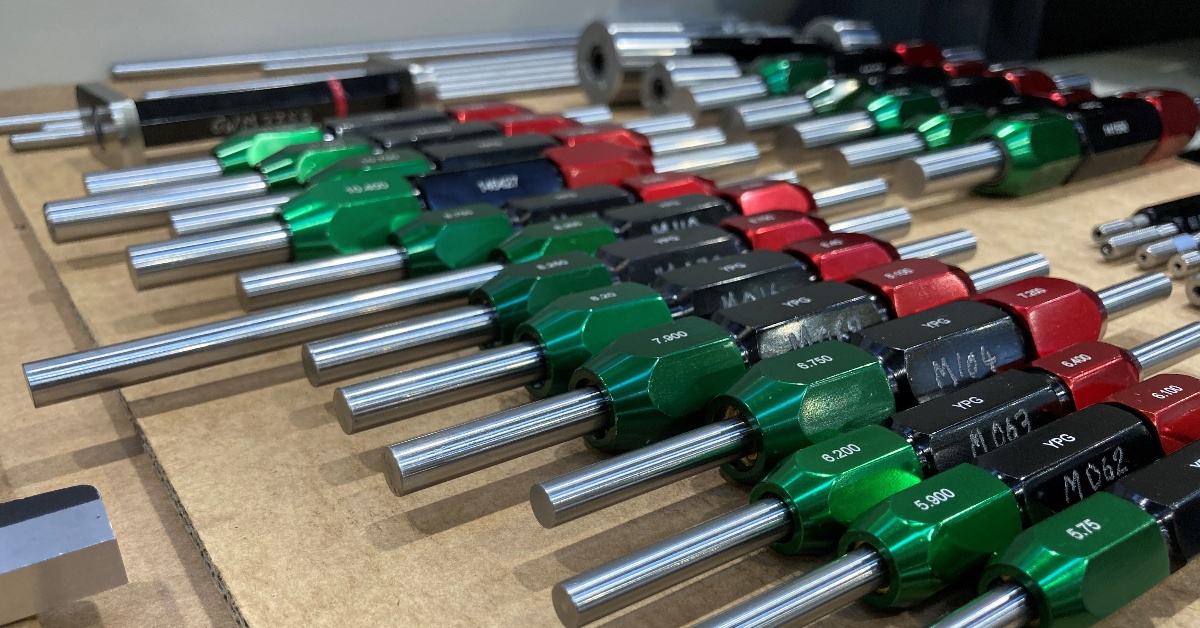Unless you can match supplier measurement capacity with lengthy (and costly) tolerance re-measurement at Goods In, you need to be able to trust that your supplier has met your part specifications.
As a machining buyer, fully understanding tolerance and inspection processes, as well as knowing how you’ll react to out of spec situations will really help with this.
Tolerance considerations
Tolerances are the allowable range for a part dimension, determined at the design stage. They’re vital for the form and function of the part. The tighter the tolerance specified, the more it will cost to achieve. This is due to the larger number of set-ups, specialised processes and any additional fixturing needed.
Often, parts are over-specified at the design stage, leading to unnecessary processes and cost. Working with your supplier from the beginning will help you and your designer understand exactly what is necessary and achievable (in terms of application, tolerance slack and materials), potentially saving you significant cost and lead time further in the process.
But once you have specified a tolerance, you need to be able to trust your supplier to achieve this, as well as report and inspect accurately.
Understanding the level of inspection
While the tolerance may be written on the inspection report, it’s useful as a buyer to ask the following questions.
- Have you understood what level of inspection you have asked for?
- Does your purchase order ask for 100% inspection?
- Do you need inspection of all part dimensions?
Knowing exactly what level of inspection is necessary is important. A high performance engine block may comprise of 7,000 dimensions. And while a Formula 1 customer may ask for a detailed report on every single dimension and every single part (including more than one measurement technique and an including an internal material CT scan), this is not going to be needed for every part.
Keep in mind too, if a feature is complex to machine, it’s also probably going to be harder to measure. This additional difficulty can increase costs, due to any specialised inspection equipment needed.
ISIR
You may also ask for an ISIR (Initial Sample Inspection Report), and then agree a sampling rate for other parts. But, as a buyer it’s essential to clarify exactly what you mean with this? Will this be every 10th, or every 100th sample? Or maybe just critical dimensions only? And what will be the consequences on your part and production if a process leads to out of tolerance measurements of dimensions that aren’t measured?
When is ‘out-of-spec’ the same as scrap?
Another consideration as a buyer is being clear on when ‘out of spec’ on tolerance is the same as a part being scrap. It's been known for a customer to refuse to accept a part that’s one micron below the bottom limit of tolerance. But is this really necessary? It’s perhaps understandable if you’re machining the mirror for NASA’s next telescope, but otherwise, insisting on achieving such high micron-level tolerance is likely to just add to your costs and lead time. You can read our blog on microns and micron-level accuracy to find out more.
Supplier attitudes are essential
It’s important that your supplier is compliant to all standards, as well as passing all internal and external audits.
When working with different machining suppliers, you’ll likely encounter different attitudes in different companies for how they treat instances where parts are out of spec. Any professional machinist should be extremely strict, and record dimensions consistently according to their process all the time.

Buying machined parts can be a complex process. We’ve written our free Machining Buyer’s Guide to give you information and guidance to help make the buying process easier.

 Get in touch
Get in touch
